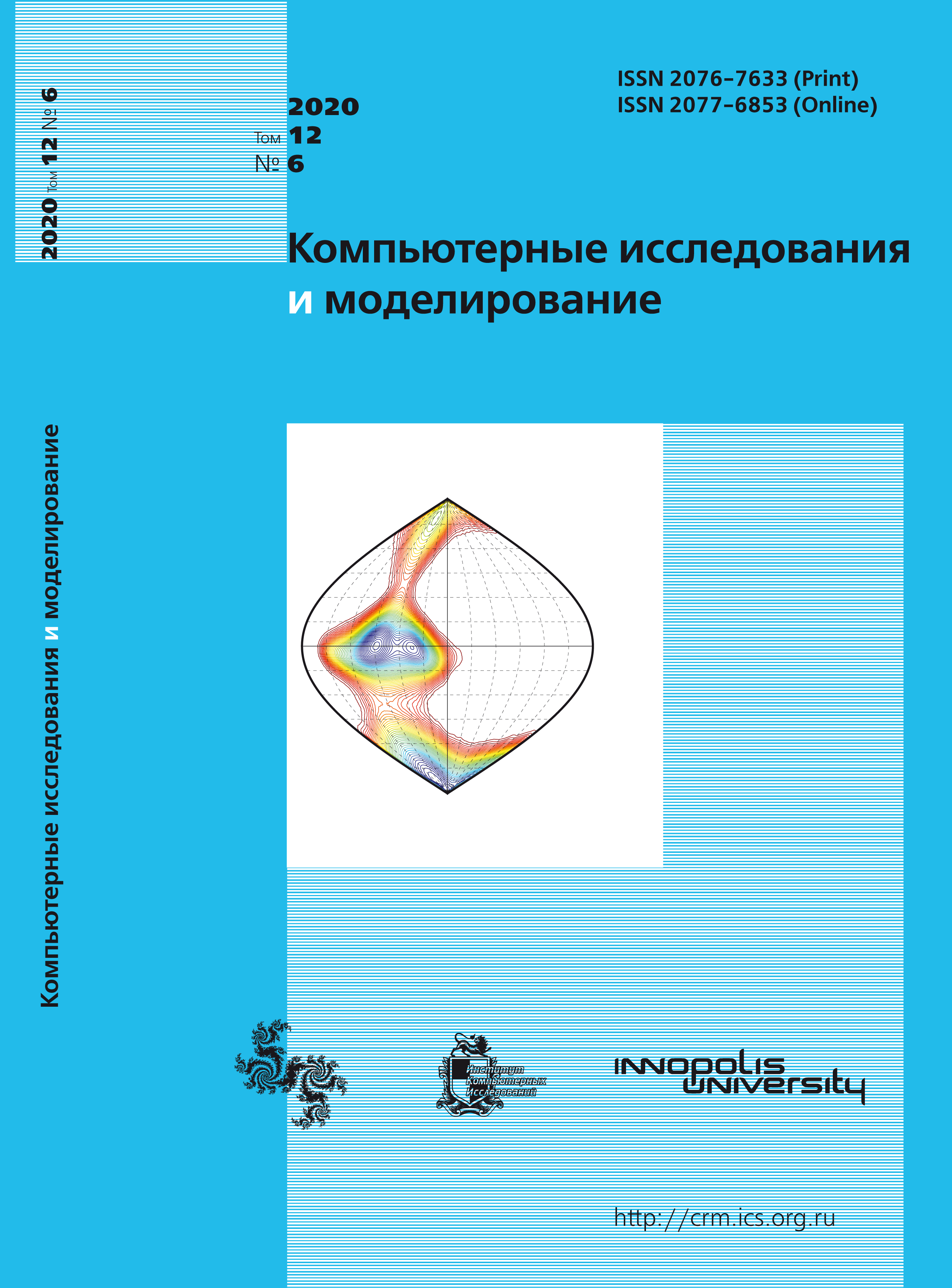All issues
- 2025 Vol. 17
- 2024 Vol. 16
- 2023 Vol. 15
- 2022 Vol. 14
- 2021 Vol. 13
- 2020 Vol. 12
- 2019 Vol. 11
- 2018 Vol. 10
- 2017 Vol. 9
- 2016 Vol. 8
- 2015 Vol. 7
- 2014 Vol. 6
- 2013 Vol. 5
- 2012 Vol. 4
- 2011 Vol. 3
- 2010 Vol. 2
- 2009 Vol. 1
Methodical questions of numerical simulation of external flows on locally-adaptive grids using wall functions
 pdf (1158K)
pdf (1158K)
The work is dedicated to investigation of possibility to increase the efficiency of solving external aerodynamic problems. Methodical questions of using locally-adaptive grids and wall functions for numerical simulation of turbulent flows past flying vehicles are studied. Reynolds-averaged Navier–Stokes equations are integrated. The equations are closed by standard k–\varepsilon turbulence model. Subsonic turbulent flow of perfect compressible viscous gas past airfoil RAE 2822 is considered. Calculations are performed in CFD software FlowVision. The efficiency of using the technology of smoothing diffusion fluxes and the Bradshaw formula for turbulent viscosity is analyzed. These techniques are regarded as means of increasing the accuracy of solving aerodynamic problems on locally-adaptive grids. The obtained results show that using the technology of smoothing diffusion fluxes essentially decreases the discrepancy between computed and experimental values of the drag coefficient. In addition, the distribution of the skin friction coefficient over the curvilinear surface of the airfoil becomes more regular. These results indicate that the given technology is an effective way to increase the accuracy of calculations on locally-adaptive grids. The Bradshaw formula for the dynamic coefficient of turbulent viscosity is traditionally used in the SST k–\omega turbulence model. The possibility to implement it in the standard k–\varepsilon turbulence model is investigated in the present article. The calculations show that this formula provides good agreement of integral aerodynamic characteristics and the distribution of the pressure coefficient over the airfoil surface with experimental data. Besides that, it essentially augments the accuracy of simulation of the flow in the boundary layer and in the wake. On the other hand, using the Bradshaw formula in the simulation of the air flow past airfoil RAE 2822 leads to under-prediction of the skin friction coefficient. For this reason, the conclusion is made that practical use of the Bradshaw formula requires its preliminary validation and calibration on reliable experimental data available for the considered flows. The results of the work as a whole show that using the technologies discussed in numerical solution of external aerodynamic problems on locally-adaptive grids together with wall functions provides the computational accuracy acceptable for quick assessment of the aerodynamic characteristics of a flying vehicle. So, one can deduce that the FlowVision software is an effective tool for preliminary design studies, for conceptual design, and for aerodynamic shape optimization.
Indexed in Scopus
Full-text version of the journal is also available on the web site of the scientific electronic library eLIBRARY.RU
The journal is included in the Russian Science Citation Index
The journal is included in the RSCI
International Interdisciplinary Conference "Mathematics. Computing. Education"






